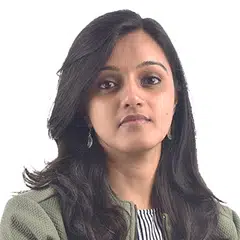Kerala has the lowest poverty rate in India. But has it eradicated extreme poverty, as it claims?
Sign up now: Get ST's newsletters delivered to your inbox
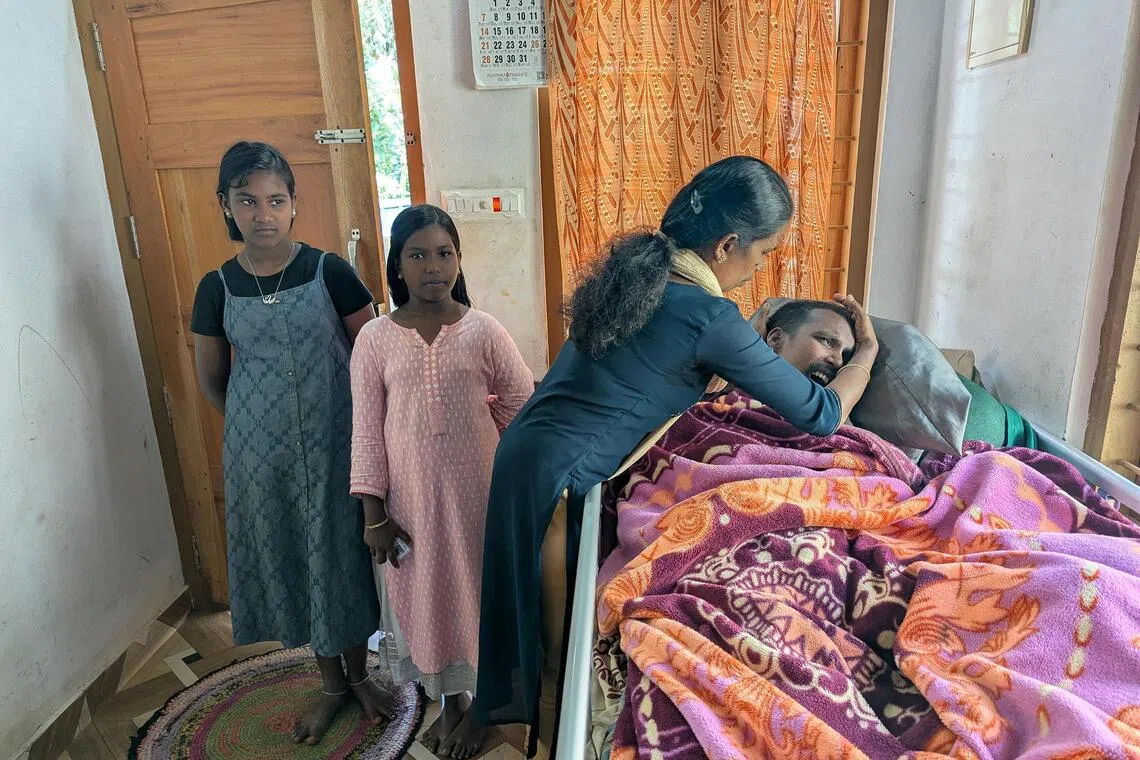
Mrs Parameshwari S adjusting her paralysed husband Selvam's pillow as their daughters looked on. A Kerala state programme listed the family as "extremely poor".
ST PHOTO: ROHINI MOHAN
Follow topic:
- Kerala claimed to eradicate extreme poverty, assisting 64,006 households with identity documents, grants, and welfare schemes.
- Economists criticised Kerala's claim as exaggerated, questioning the definition of extreme poverty and exclusion of deserving families, despite "noble intent”.
- EPEP 2.0 was announced to reach missed families, with officials vowing continuous support, amid opposition claims of it being an "election gimmick".
AI generated
IDUKKI, Kerala - As the Kerala government threw a shindig on Nov 1 in its capital city, Thiruvananthapuram, to announce it had eradicated extreme poverty, Mrs Parameshwari S. was rushing back home from the village market to feed her paralysed husband his lunch.
She burst into her house, instructed her daughters to restock their little shop in the front yard with the shopping, and squeezed her husband Selvam’s shoulder, assuring him that she would get his meal ready soon.
Four years ago, Mr Selvam, 37, had a stroke while driving a bus, and the penniless family was kicked out of its rented one-room house. Mrs Parameshwari did not think he would live to see this day.
The couple had two daughters – seven and eight – no income, no land, and not even government identity documents.
Mrs Parameshwari, 32, told The Straits Times she “would have drowned” if the state government had not yanked her out in time.
Her family was among the 64,006 households that the Kerala state government considered extremely poor and assisted over four years in a massive grassroots programme costing more than 10 billion rupees (S$146.7 million) in state funds and supported by 400,000 community workers and village officials.
But despite the humane intent and spirited implementation that has pulled thousands of Kerala’s most marginalised out of destitution, the communist-led state government’s grand declaration on Nov 1 that it was the first state to “eradicate extreme poverty” has raised eyebrows.
Economists have said the claim is exaggerated and unsustainable, and also questioned the state’s definition of extreme poverty, which could have excluded deserving families.
After the left-leaning ruling coalition under Chief Minister Pinarayi Vijayan was re-elected in Kerala in 2021, one of the Cabinet’s first decisions was to launch the Extreme Poverty Eradication Programme (EPEP).
The World Bank defines extreme poverty as living on less than US$3 (S$3.90) a day. Against this benchmark, more than 830 million people worldwide and 75 million Indians are estimated to be in extreme poverty in 2025.
The Indian central government has long used food or calories available per day as the basis for classifying people living below the poverty line, who are entitled to social security. Recently, it has also begun measuring poverty’s multiple dimensions through indicators like low income and access to healthcare, housing and education.
Kerala, however, figured these assessments were not enough.
Noting that thousands in the state remained hungry, homeless and out of the state’s purview even after Kerala’s two previous attempts to support destitute people in 2002 and 2016, “a traditional poverty survey method may not be effective”, said the EPEP’s methodology handbook prepared by the Kerala Institute of Local Administration, in Thrissur city.
Instead, thousands of discussions were held at village, ward and district levels with people’s committees, which included health workers, women’s self-help groups, non-profits, village officials and elected ward members. A ground-up list was prepared using a questionnaire with around 50 questions that tallied “extreme hardship factors”. The list was finally approved by the village council.
That was how Mrs Parameshwari came to be included in the EPEP’s list of 35 people in Chakkupallam village in Kerala’s forested Idukki district.
Within six months, the village office and state welfare departments had given her family identity documents. Over the next 18 months, she received a self-employment grant for a small shop, 1,742 sq ft of land, and 400,000 rupees to build a house on it.
She gets monthly food grain from a local non-profit, and medicine and physiotherapy from the village healthcare centre for her husband.
Mrs Parameshwari still juggles a dozen tasks, but “can sleep peacefully now”, she said.
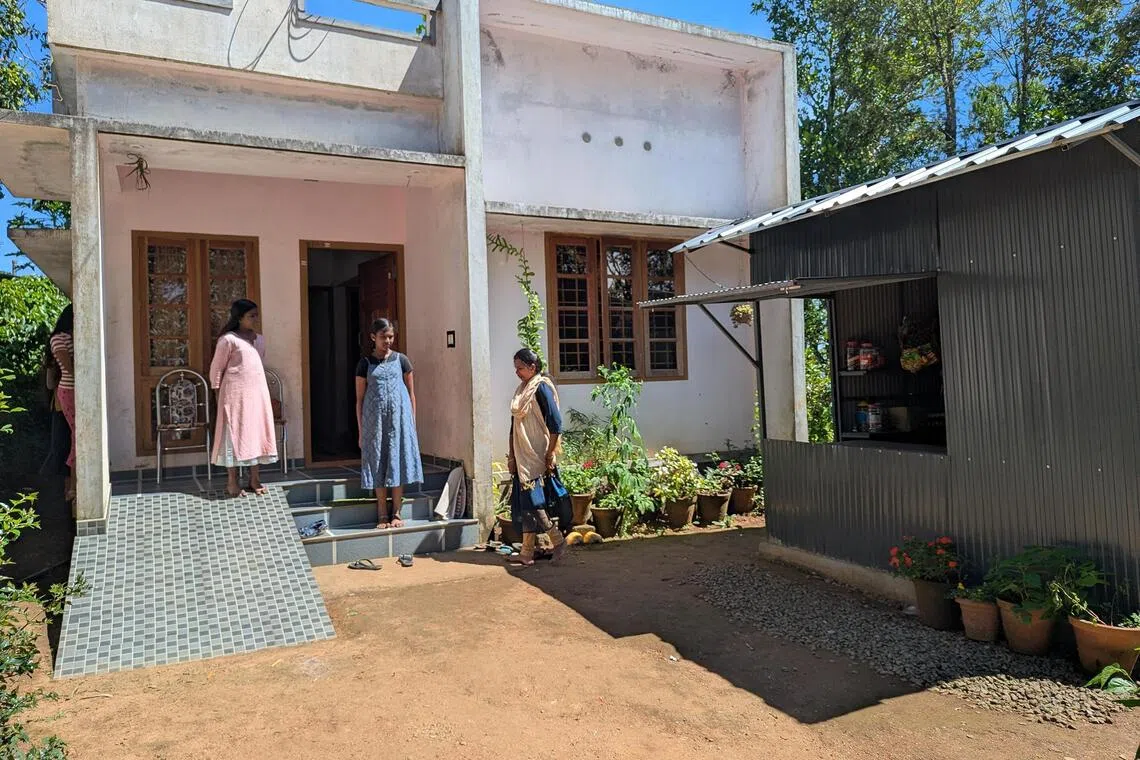
Mrs Parameshwari S. and her family in Chakkupallam village, Idukki district, were given 1,742 sq ft of land, funds to build a house on it and a grant for a small shop (right) under the Extreme Poverty Eradication Programme.
ST PHOTO: ROHINI MOHAN
The Kerala way
Pulling off this coordinated rescue for even one family in India is a miracle, given sluggish decision-making and well-meaning but knotted welfare schemes that defeat most laypeople.
India lifted 171 million people out of extreme poverty between 2011 and 2022, but still has the largest number of poor people in the world. More than 350 million Indians still lack access to nutritious food, safe housing, healthcare and education, according to a June 2025 World Bank report.
But Kerala stands apart. Its poverty rate is the lowest in India, at 0.55 per cent, while the national average is 11.28 per cent, according to the central government think-tank Niti Aayog.
Its Human Development Index score, which encompasses health, life expectancy, education and standard of living, is 0.79, on a par with some European countries.
The southern state has long outperformed others in education, health and poverty indexes, through “public action from the 1960s and result-oriented state spending on literacy, health and sanitation as part of an organised programme to end deprivation”, said economist Jayan Jose Thomas from the Indian Institute of Technology Delhi.
Even so, it had people who were hungry, homeless or destitute.
“The EPEP was aimed at covering families untouched by Kerala’s model of development, people who are socially isolated and excluded even from our trajectory of social transformation,” Mr M.B. Rajesh, minister for local self-government and rural development, told ST.
Over the past four years, Kerala identified tens of thousands of bedridden, elderly, physically challenged and homeless people, as well as tribal and Dalit (former “untouchable”) families, with no access to the state. They also included vulnerable households like poor families with HIV-positive or queer members, widows with toddlers and no income, and those who had suffered the loss of a breadwinner, medical emergencies, and mental or chronic health challenges.
Supervised by the Local Self Government Department, the programme made existing social welfare schemes of the state and central government accessible to the poorest and most marginalised groups.
It prioritised issuing identity documents to those without them, opened bank accounts for them and enrolled them in health insurance.
Community workers from Kudumbashree, a women’s empowerment network, drop in with meals every day for 2,200 people, and give food kits with grain, flour, vegetables and oil to 18,000 families.
Nurses and health workers visit the ailing to offer physiotherapy or palliative care. More than 85,000 people get medicine delivered to their homes.
Mrs Remya S., 28, a mother of two from Chavara village, had her cancer medication and surgery fully paid for, and received a health card that ensures free lifetime treatment at any state hospital.
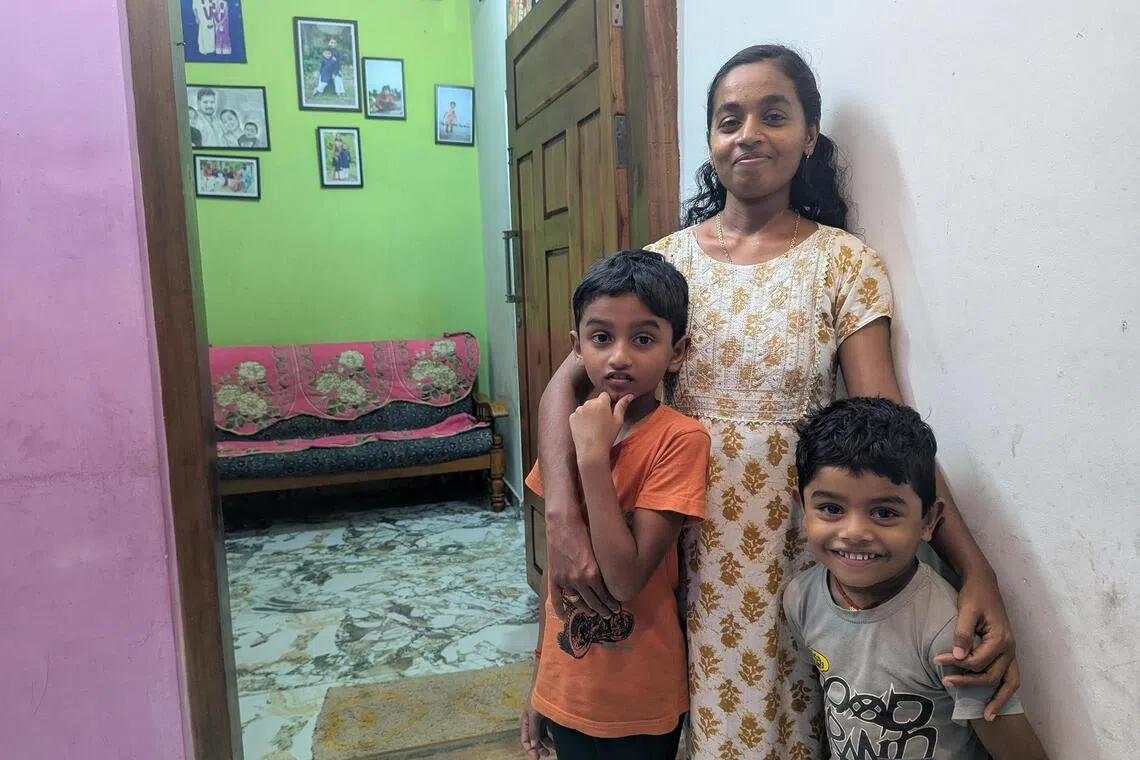
Mother of two Remya S., 28, from Chavara village in Kerala’s Kollam district, was diagnosed with cancer three months after her husband died of Covid-19.
ST PHOTO: ROHINI MOHAN
Mrs Remya’s electrician husband died of Covid-19 in 2021, when their sons were three years old and 24 days old, respectively. Three months later, she was diagnosed with thyroid cancer.
When officials surveyed the area for extremely poor families, the elected ward member J.R. Jayaprakash proposed Mrs Remya’s besieged family for eligibility.
The EPEP gave her 400,000 rupees through the state’s Life Mission to build a house, and 50,000 rupees to register a ready-made garments retail unit. When Mrs Remya is too unwell to run it, she works at the village office’s help desk.
Drilling down with help at such a granular level takes an army of local government representatives and community workers making weekly home visits and customised micro-plans for each family.
Mrs Annamma Chacko, 90, and her single daughter Aliamma, 62, fixed their leaky roof and run their household on the elder woman’s pension of 1,600 rupees.
Having worked as a village creche helper for 35 years for 150 rupees a day, Ms Aliamma had no savings. When ST visited her with the village officer, she requested assistance to apply for her own state pension.
“If the government lets go of their hand even for a few months, they will sink deeper,” said Chakkupallam’s village extension officer, Ms Reenamole Chacko, who checks on the families she is in charge of every few weeks.
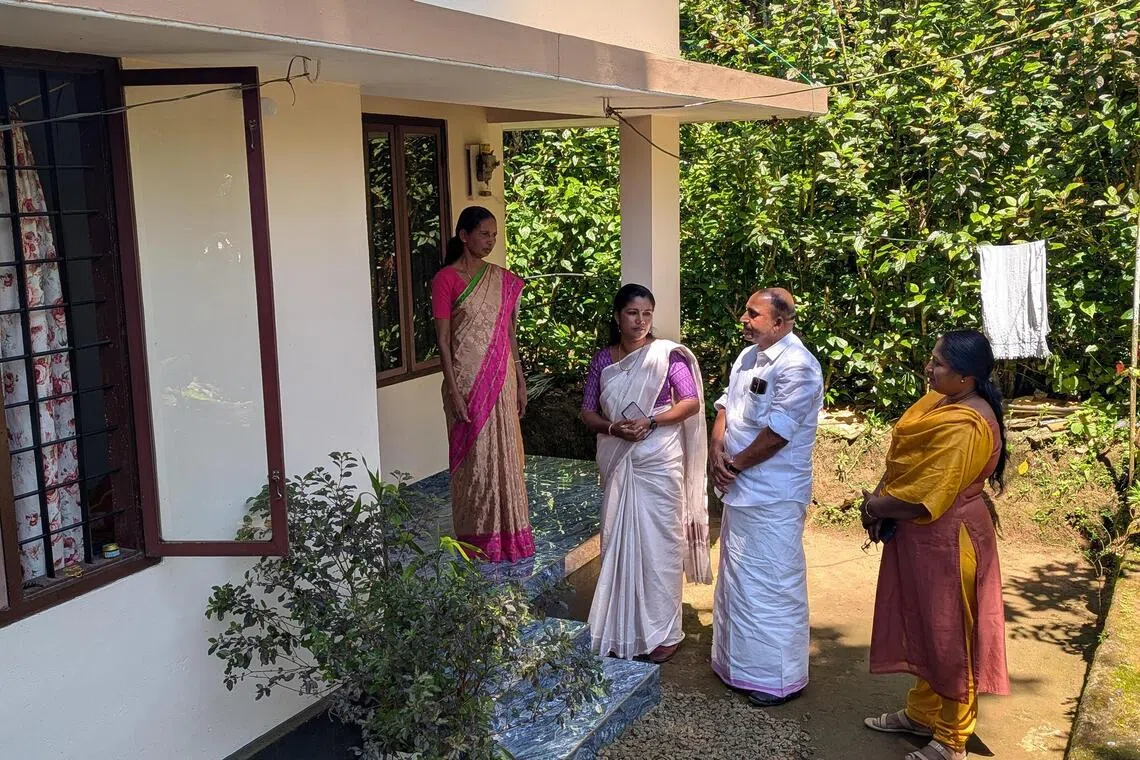
Village officials and ward members meeting Ms Aliamma Chacko, 62, and her 90-year-old mother in Chakkupallam village in Kerala’s forested Idukki district to check if they are receiving their old-age pensions.
ST PHOTO: ROHINI MOHAN
Eradication or exaggeration?
While thousands have received a leg-up, the Kerala government’s assertion of having eradicated extreme poverty has drawn criticism.
“Kerala is much ahead of other states in reducing poverty, but eradication of extreme poverty is an exaggerated claim to make. Suppose someone gets a chronic illness, they’ll be destitute again,” said Professor V. Mathew Kurian, joint director of Mahatma Gandhi University’s K.N. Raj School of Economics.
Economists Arjun Ramachandran and Kuriakose Mathew wrote in The Indian Express that the project “flaunts noble intent” but “is riddled with misnomers” like mix-ups in standard family size, and excluded “the poorest of the poor” just because they had ration cards that entitled them to subsidised food grains.
The Adivasi Gotra Maha Sabha, an organisation which represents a section of tribal communities, issued a statement that a list of the extremely poor in which only 5 per cent were tribal people and 20 per cent were Dalits – communities known to be landless, malnourished and unemployed – was “false”.
Malayalam news channels profiled immobile senior citizens, along with families living in leaky tents, as news anchors demanded: “How can Pinarayi Vijayan say Kerala has eradicated extreme poverty, when such helpless people exist?”
When asked about it, Mr Rajesh said that the programme required village officials to continuously monitor vulnerable beneficiaries to ensure they do not fall back below subsistence levels. “Those receiving food and palliative care will also be supported until their death,” he said.
Even as Mr Vijayan boasted about the eradication of extreme poverty on Nov 1, he also announced an EPEP 2.0 to reach out to destitute families the first phase may have missed.
Opposition parties have dismissed Kerala’s claim as an “election gimmick” and “just political”. The state is due for local body polls later in November and assembly elections in five months, and political observers said the Pinarayi Vijayan government, already in its second term, faces strong anti-incumbency.
To this, Mr Rajesh said: “It is political, yes, but it is not party politics. Only if we are in government can we pursue our politics of equality and dignity.”
And while it may be flawed and incomplete, the continuation of a programme that made Mrs Remya “feel less invisible” is a relief to many. If nothing else, in the clamour of personality cults, identity battles and patronage in Indian politics, Kerala managed to generate, even for a week, a rare and vital debate centred on the country’s most destitute.

